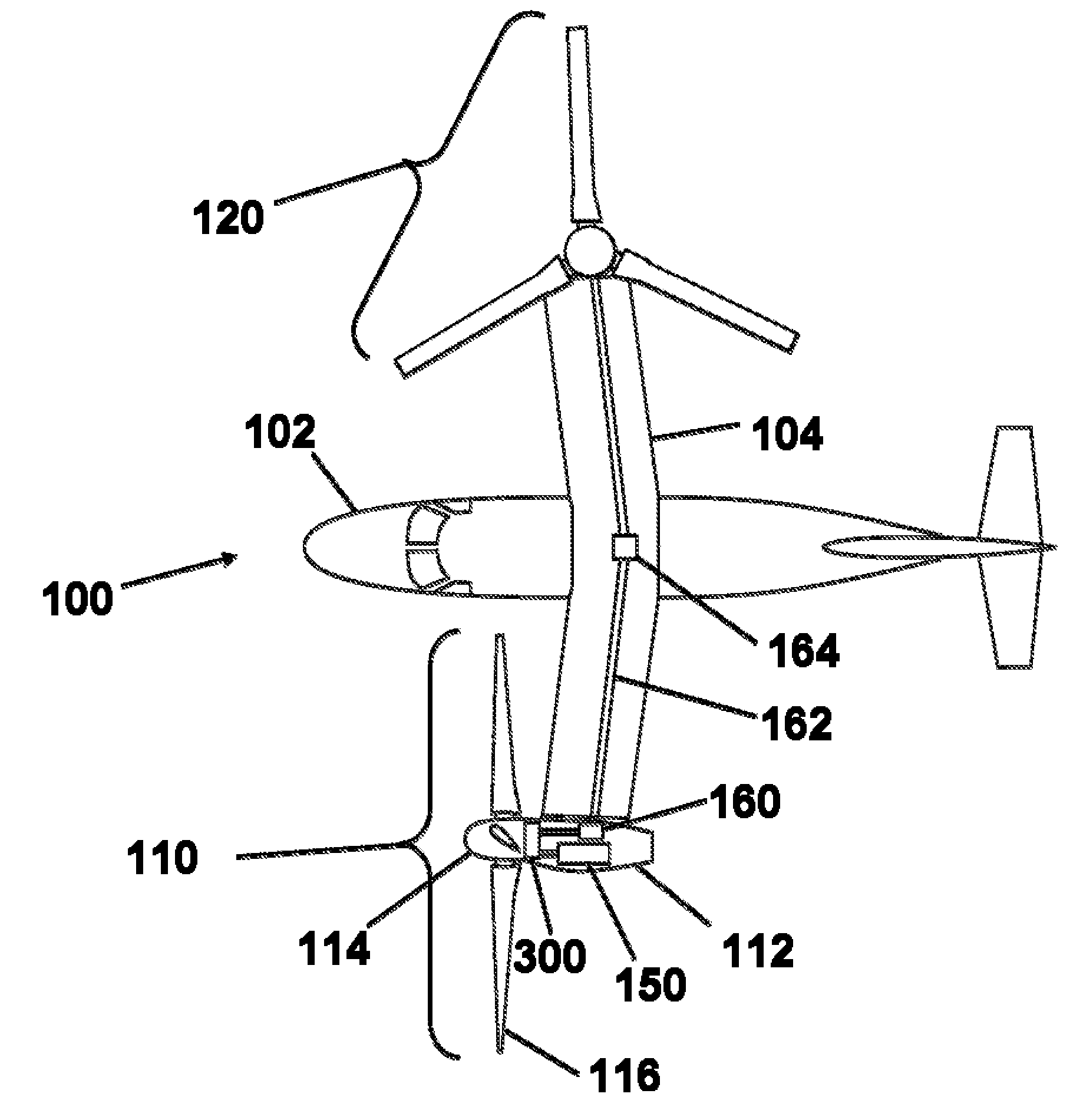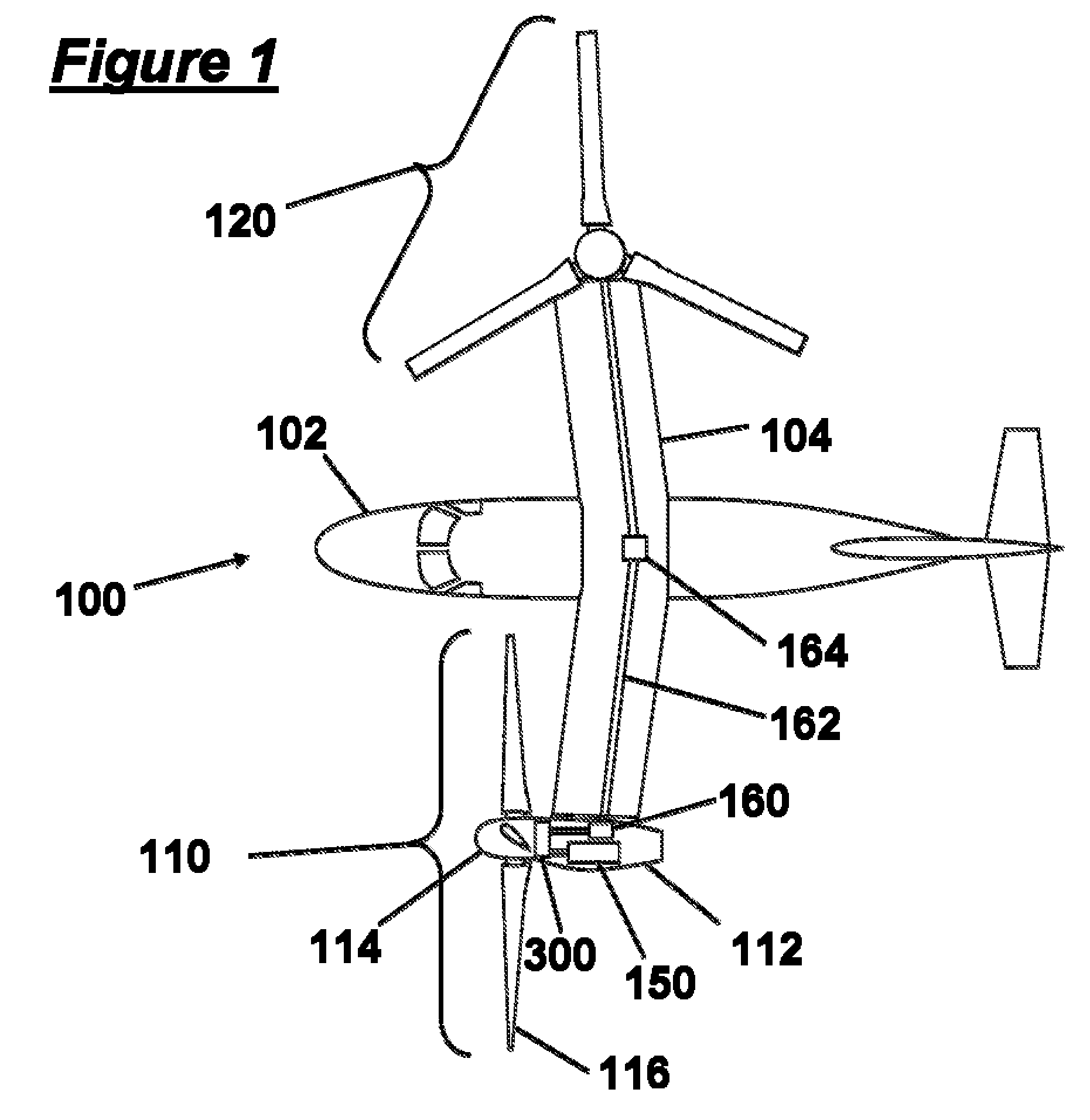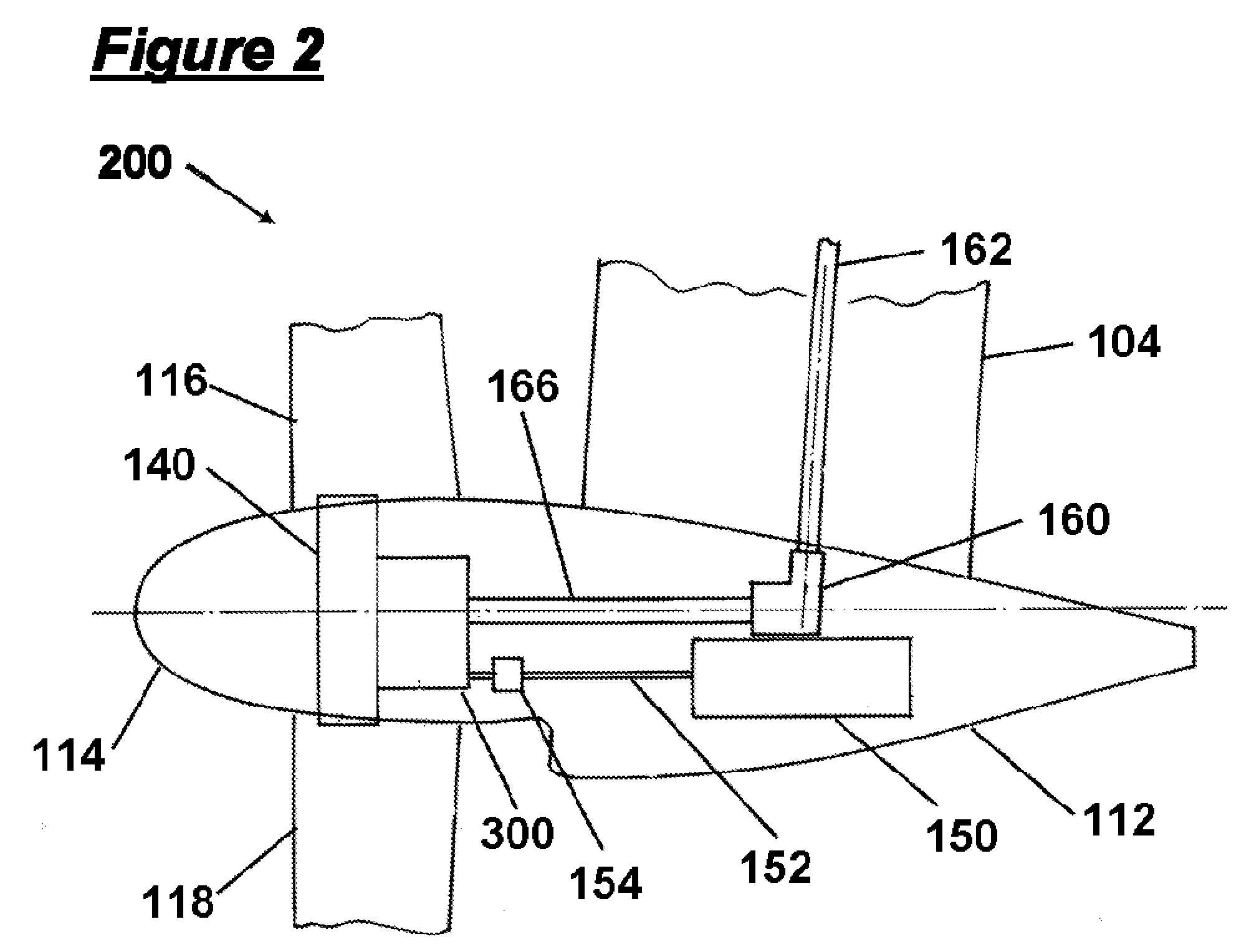Rotorcraft engine and rotor speed synchronization
- Summary
- Abstract
- Description
- Claims
- Application Information
AI Technical Summary
Benefits of technology
Problems solved by technology
Method used
Image
Examples
Embodiment Construction
[0027]FIG. 1 is a top view schematic of a preferred tiltrotor aircraft 100. The aircraft comprises a fuselage 102, wing 104, first rotor system 110, and second rotor system 120. The second rotor system 120 is shown in a vertical orientation, consistent with helicopter-mode flight. The first rotor system 110 is shown in a horizontal orientation, consistent with airplane-mode cruise flight. In practice, the first rotor system 110 and second rotor system 120 are likely to have a substantially similar orientation at any given time in flight. A rotor system 110 comprises a hub 114 coupled to a tilting nacelle 112, which tilts with respect to the wing 104. A rotor blade 116 is coupled to the rotor hub 114. An engine 150 is preferably disposed within the tilting nacelle 112 and is coupled to a shifting gearbox 300. A miter gearbox 160 is also coupled to the shifting gearbox 300 as well as a cross-wing driveshaft 162. The cross-wing driveshaft 162 is preferably disposed within the wing 104 ...
PUM
 Login to View More
Login to View More Abstract
Description
Claims
Application Information
 Login to View More
Login to View More - R&D
- Intellectual Property
- Life Sciences
- Materials
- Tech Scout
- Unparalleled Data Quality
- Higher Quality Content
- 60% Fewer Hallucinations
Browse by: Latest US Patents, China's latest patents, Technical Efficacy Thesaurus, Application Domain, Technology Topic, Popular Technical Reports.
© 2025 PatSnap. All rights reserved.Legal|Privacy policy|Modern Slavery Act Transparency Statement|Sitemap|About US| Contact US: help@patsnap.com



